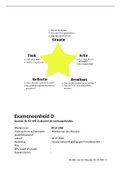Exam (elaborations)
IOP4863 - EXAM PACK (2022)
- Course
- Institution
Contains frequently asked Questions and Answers from past exam papers PLUS a summary of important study notes - Definitions, Short Questions, and Long questions and lecturer's exam tips.
[Show more]












